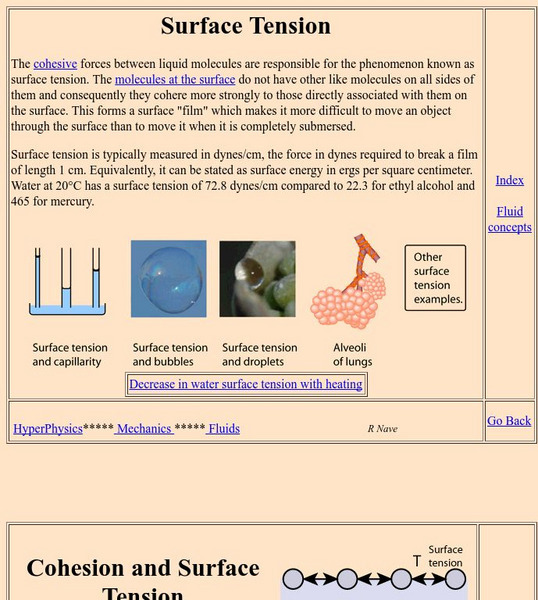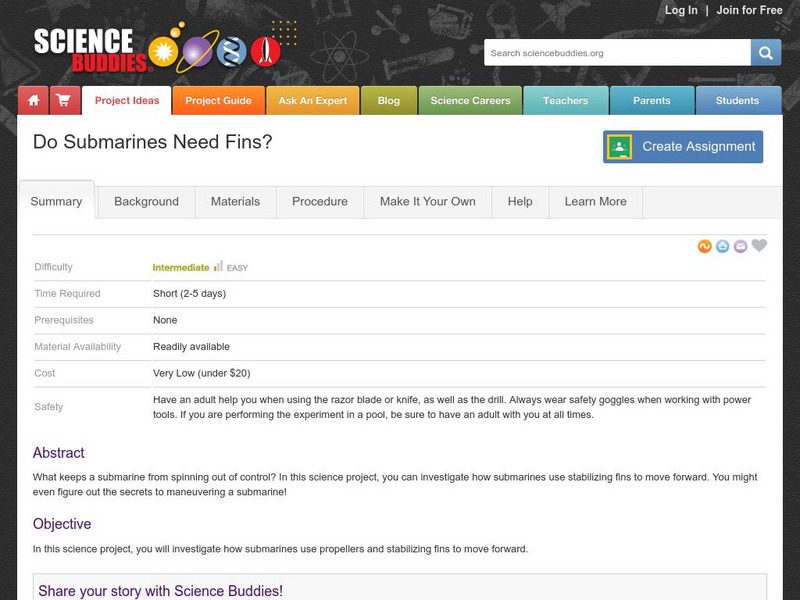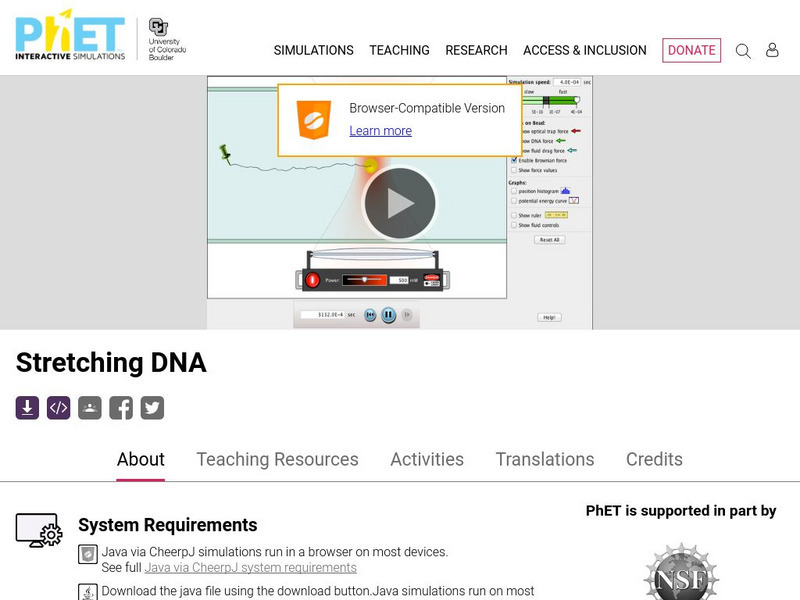Georgia State University
Georgia State University: Hyper Physics: Surface Tension
Georgia State explains, defines, and illustrates the concept of surface tension. Includes photos, examples and links to further information.
CK-12 Foundation
Ck 12: Interactive Physics for High School
This digital textbook covers core physics concepts and includes interactive features, real world examples, videos, and study guides.
Annenberg Foundation
Annenberg Learner: 5 Question Survey: Rising and Sinking
Find out your or your students' understanding of fluid displacement. Afterwards you can see how others answered the questions.
University of Colorado
University of Colorado: Ph Et Interactive Simulations: Buoyancy
An interactive simulation that teaches about buoyancy and density by applying various forces and modifying the properties of objects and fluids. This simulation can either be downloaded or played online and includes handouts, lesson...
University of Colorado
University of Colorado: Ph Et Interactive Simulations: Stretching Dna
Explore stretching just a single strand of DNA using optical tweezers or fluid flow. Experiment with the forces involved and measure the relationship between the stretched DNA length and the force required to keep it stretched.
OpenStax
Open Stax: Pressure
From a chapter on Fluid Statics in a Physics textbook. This section of the chapter defines pressure and how it relates to force, as well as how to find the amount of force given area and pressure. Includes questions, problems and...
OpenStax
Open Stax: Pascal's Principle
From a chapter on Fluid Statics in a Physics textbook. This section of the chapter looks at Pascal's principle and its applications, and how forces in a hydraulic system are related. Includes problems and exercises.
Massachusetts Institute of Technology
Mit: Open Course Ware: Courses: Physics: Classical Mechanics
College-level online course highlighting the study of classical mechanics. This course focuses on Newtonian mechanics, fluid mechanics, and kinetic gas theory. Course features include a 35 video lecture series by Walter Lewin. Also link...
TeachEngineering
Teach Engineering: Physics of the Flying T Shirt
Students are introduced to the physics concepts of air resistance and launch angle as they apply to catapults. This includes the basic concepts of position, velocity and acceleration and their relationships to one another. They use...
Science Buddies
Science Buddies: Do Submarines Need Fins?
In this science project, you can investigate how submarines use stabilizing fins to move forward. Exploring friction and buoyant force you will get closer to understanding how these large ships function. Research resources are included...
University of Minnesota
The Physics of Flight: Bernoulli's Principle
Discusses air flow around the wing of a plane and its effect upon the lift and drag forces. Focuses on the application of Bernoulli's principle to wing design and the subsequent airfoil shapes.
Georgia State University
Georgia State University: Hyper Physics: Pascal's Principle
This site from Georgia State University Department of Physics and Astronomy shows a diagram of the relationship of Pascal's Principle to other topics. Links to other topics.
Science4Fun
Science4 Fun: What Is Friction
What is friction? Illustrated discussion of friction including the three types, its importance, and why it is avoided.
Massachusetts Institute of Technology
Mit: Open Course Ware: Buoyancy
Students explore buoyancy. Some topics examined in the activities are buoyant force, stability of floating objects, and Archimedes' principle. The resource consists of video clips, lecture notes, practice problems, and exam questions....
NASA
Nasa: What Is Lift?
A description of how lift is a mechanical force that requires a fluid moving through a solid object and a change in velocity.
Exploratorium
Exploratorium: Outrageous Ooze
Students can make ooze and learn about different qualifications of matter. An easy procedure is provided to make gooey ooze that you can play with when you are done.
CK-12 Foundation
Ck 12: Physical Science for Middle School
This digital textbook covers core physical science concepts and includes interactive features, real world examples, and videos.
University of Hawai'i
The Hawai`i Space Grant Consortium: Viscosity
This site provides a detailed overview of viscosity, focusing on why viscosity is so important to learn and understand. Content includes the formula for determining the viscosity of a liquid, as well as a break-down of the viscosities of...
Libre Text
Libre Text: Geostrophic Balance
Geostrophic balance is arguably the most central concept in physical oceanography and dynamical meteorology. A key feature of geostrophic balance is that rather than flowing from high to low pressure, the fluid actually moves parallel to...
Wikimedia
Wikipedia: Convection
Wikipedia offers information on convection, the transfer of heat by the motion of or within a fluid. Includes table of contents, image, and formulas.
My Science Site
Beneath the Sea: Blowing Ballast [Pdf]
Students dive down deep as they experience a hands-on activity and build a model of a submersible. Lesson plan includes a web connection, a teaching guide, extensions to learning as well as curriculum links and national science...
Exploratorium
Exploratorium: Snacks
Exploratorium's snacks aren't edible, but they are good! Use your science skills to discover gravity, learn about biology, do fun experiments.
University of Colorado
University of Colorado: Ph Et Interactive Simulations: Stretching Dna
Explore stretching just a single strand of DNA using optical tweezers or fluid flow. Experiment with the forces involved and measure the relationship between the stretched DNA length and the force required to keep it stretched. Is DNA...

















